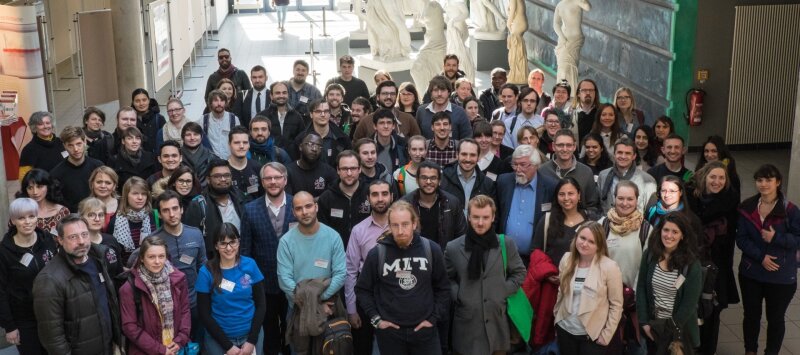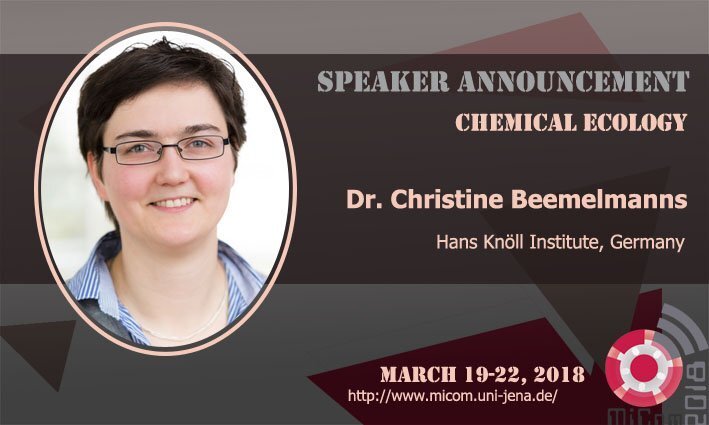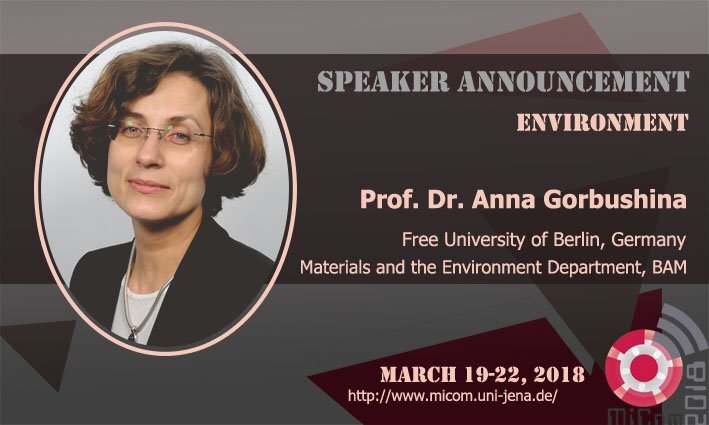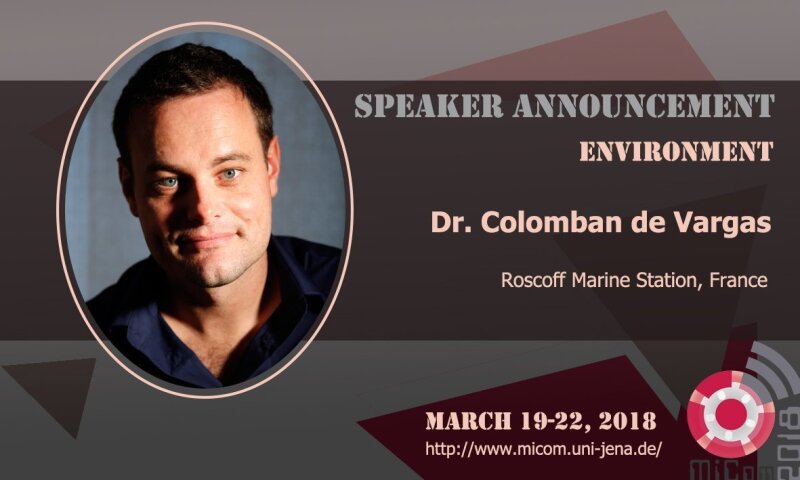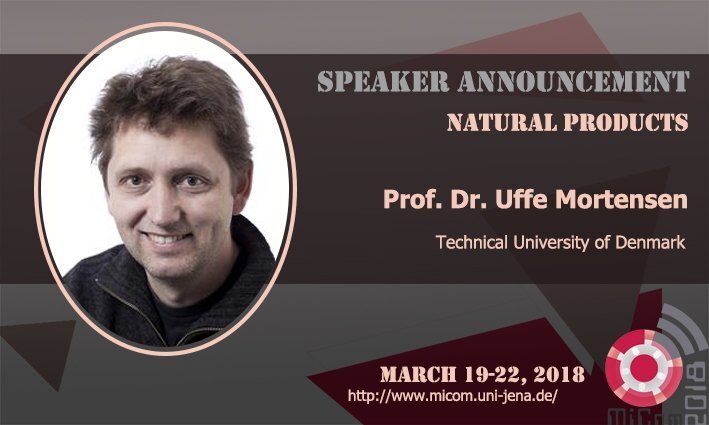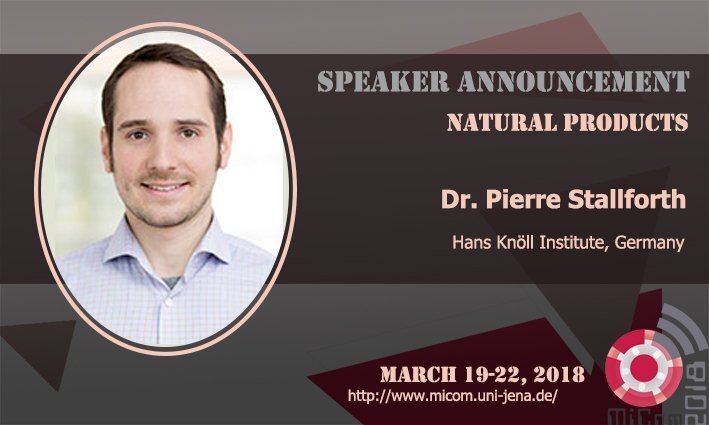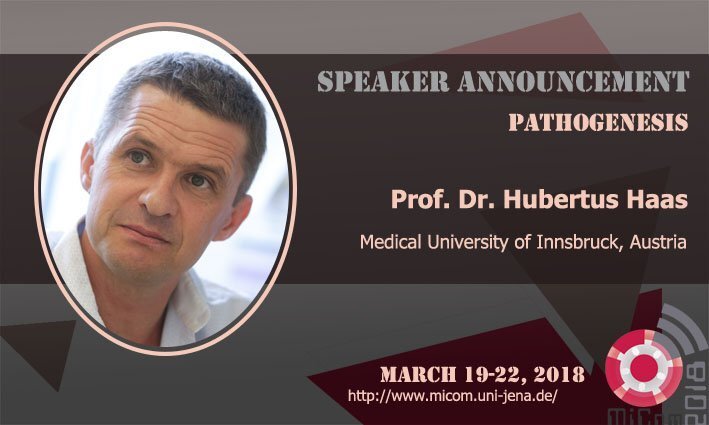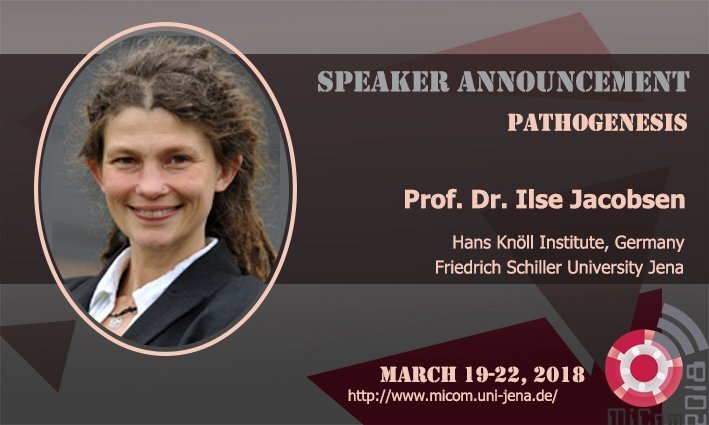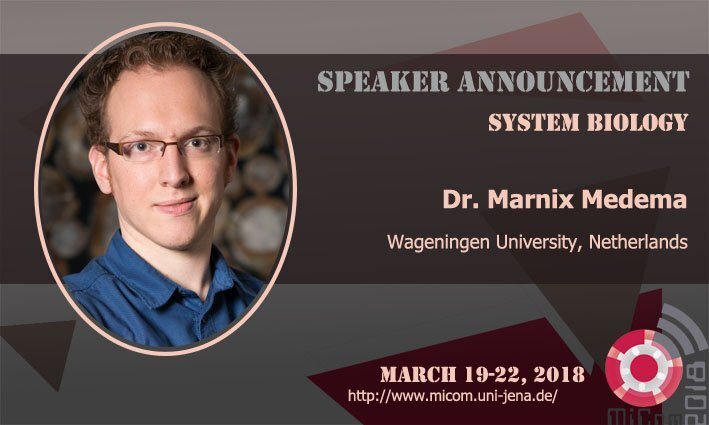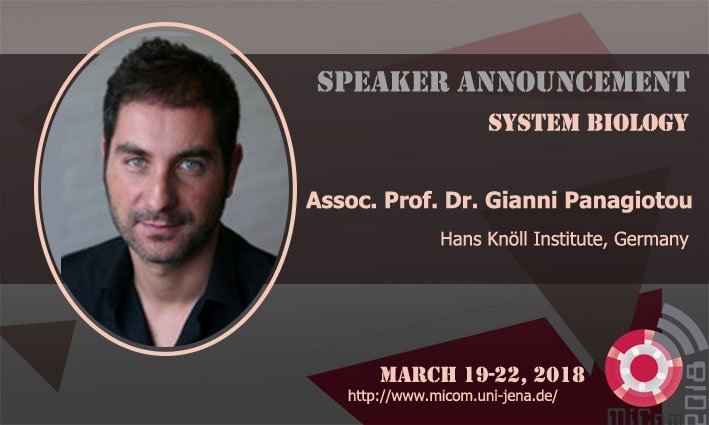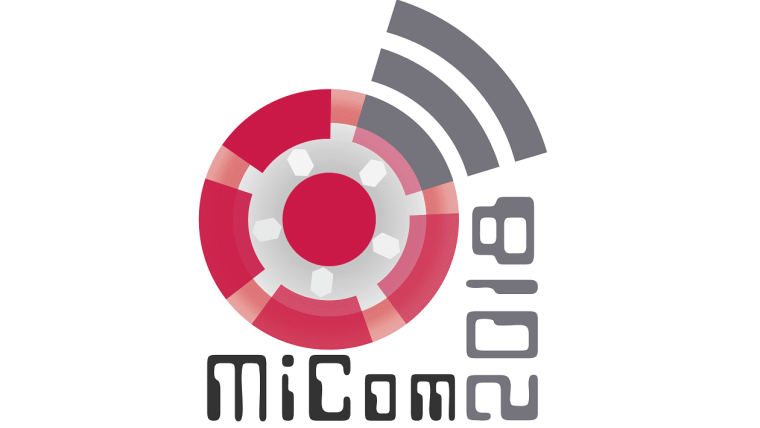
Thank you all for participating and sharing of your fruitful results! The MiCom especially attracting young scientists started in 2010 and is organized by PhD students of the Jena School for Microbial Communication (JSMCExternal link). MiCom2018 had over 160 participants from more than 20 different countries and a range of internationally renowned scientists from both Germany and abroad!
MiCom 2018 group picture
Image: MiCom 2018Besides oral presentations in different sessions, participants had deeper and active communication in welcome party (with Science Slam), poster session, workshops, conference dinner and various social acitivies. We heartly hope you enjoyed this conference for young scientists and got back with up-to-date “news” in microbial communication.
For further news and photos, please browse through our website and follow our updates on social media (FacebookExternal link/TwitterExternal link). We look forward to seeing you again in Jena and hearing about your research in the future!
Sessions and keynote speakers
Portrait of Christine Beemelmanns
Image: Christine BeemelmannsAs head of the independent research group, Chemical Biology of Microbe-Host Interactions at the Hans-Knöll Institute in Jena, Dr. Christine Beemelmanns devotes herself to understanding the ‘chemical language’ of microbial symbionts associated with marine and terrestrial invertebrates. Unlike human languages, microbes have specific small-molecule-mediated ways to coordinate, communicate and associate with other organisms or to fend off competing organisms. By studying a fungus-growing termite system and the metamorphosis of marine hydroid polyps, Dr. Beemelmanns’s group is currently working to uncover these interaction-mechanisms on the metabolic and transcriptomic level. Along these lines, her group investigates the bacterial symbionts for their biosynthetic capabilities to identify new natural products with unprecedented chemical scaffolds.
Portrait of Anna Gorbushina
Image: Anna GorbushinaProf. Dr. Anna Gorbushina leads the Materials and the Environment department of the Federal Institute for Materials Research and Testing (BAM).She holds a Professorship at the Freie Universität Berlin, in the department of Earth Sciences as well as the department of Biology, Chemistry, Pharmacy. Prof. Dr. Gorbushina is a geomicrobiologist studying the interactions between model fungal biofilms and air-exposed material surfaces. Throughout her research career, she has been particularly interested in the eco-physiology, genetics and genomics of rock-dwelling melanised fungi. Studies of these organisms are fundamentally important for understanding the processes underlying microbially induced mineral weathering (including stone monuments) as well as subaerial biofilm formation and ecology.
Portrait of Colomban de Vargas
Image: Colomban de VargasDr. Colomban de Vargas is a Franco-Swiss oceanographer, fascinated by the co-evolution between eukaryotic Life and the Earth system. He is leading the EPEP – Evolution des Protistes et des Ecosystèmes Pélagiques team within the ‘Groupe Plancton’ at the ‘Station Biologique de Roscoff,’ CNRS, France. Obsessed by the dramatic diversification of forms and cell/genome complexity in protists, Dr. de Vargas has coordinated international efforts to unveil the biodiversity (e.g. BioMarKsExternal link), taxonomy (UniEukExternal link), and ecosystem functions (Tara Oceans/OceanomicsExternal link; Plankton PlanetExternal link), of marine protists across global organismic and spatio-temporal scales, including paleo-oceans. Currently pushing the development of automated, high-content microscopy and single-cell –omics technologies for aquatic ecology, Dr. de Vargas believes that both protists and plankton are exceptional models to understand self-organization of complex adaptive systems.
Portrait of Uffe Mortensen
Image: Uffe MortensenProf. Uffe Mortensen is the group leader of Eukaryotic Molecular Cell Biology in the Department of Biotechnology and Biomedicine, Technical University of Denmark. One of his long-term research goals has been to develop fungal and yeast cell factories for the increased but stable production of pharmaceuticals and other valuable compounds. Via synthetic biological methods, like CRISPER/cas9-based tool, microorganisms could be modified on the genetic level for interesting compound production, drug discovery, or defined mutant libraries construction.
Portrait of Pierre Stallforth
Image: Pierre StallforthDr. Pierre Stallforth is the head of the independent research group Chemistry of Microbial Communication at the Hans-Knöll Institute in Jena. His research is primarily focused on the isolation and identification of microbial natural products, mainly from bacteria and amoebae. The elucidation of their structures and functions can help provide a deeper understanding of the inter-species communication between bacteria and eukaryotes as well as serve as a source of potential therapeutic agents.
Portrait of Hubertus Haas
Image: Hubertus HaasProf. Dr. Hubertus Haas is the leader of the group for Molecular Microbiology at the Medical University of Innsbruck, Austria. The group’s current research centers on fungal iron homeostasis with a focus on the human pathogen Aspergillus fumigatus. Since iron uptake (e.g. via siderophores), storage and metabolism affect numerous cellular functions including germination, growth, reproduction, stress resistance and virulence, a deeper understanding of fungal iron homeostasis can lead the way towards novel diagnostic tools and antifungal therapies.
Portrait of Ilse Jacobsen
Image: Ilse JacobsenProf. Dr. Ilse Jacobsen leads the group researching Microbial Immunology at the Hans-Knöll Institute in Jena. The group looks into the role of morphology for the pathogenic fungus Candida albicans, as well as the molecular mechanisms involved in Candida sepsis and how bacterial-fungal interactions contribute to infection. By utilising immunological, microbiological and molecular methods, along with several different infection models, she tries to elucidate the processes most closely involved in the development of lethal disease following Candida infection outbreak.
Portrait of Marnix Medema
Image: Marnix MedemaDr. Medema is a computational biologist at Wageningen University, The Netherlands. Research in his group focuses on computational strategies towards natural product discovery. In addition, his group is working towards the development of integrative omics strategies to identify the biological roles that specialised metabolites play in microbial communities. Recipient of Rubicon and Veni grants from the Netherlands Organization for Scientific Research (NWO), Dr. Medema completed his PhD thesis at the University of Groningen, The Netherlands graduating cum laude. Together with the group of Tilmann Weber in Denmark, he co-ordinates the development of the Antibiotics and Secondary Metabolites Analysis Shell (antiSMASH), a bioinformatics tool used by natural products scientists around the world, as well as MIBiG, a repository for experimentally characterised biosynthetic gene clusters.
Portrait of Gianni Panagiotou
Image: Gianni PanagiotouDr. Gianni Panagiotou is the head of Bioinformatics and System Biology at the Hans-Knöll Institute in Jena. He had the privilege of studying and working in the most interdisciplinary academic centers within the fields of bioengineering, bioinformatics, and systems biology in Denmark (DTU), Hong Kong (HKU), Japan (The University of Tokyo) and Greece (NTUA). In the period of 2009-2017 he was Associate Professor at the Center for Micorbial Biotechnology, Center for Biological Sequence Analysis & Center for Biosustainability in the Technical University of Denmark and The School of Biological Sciences in The University of Hong Kong. His research focus is the development of novel therapeutic treatments for infectious and non-infectious diseases through -omic integration & modelling, metagenomics, network biology, exome sequencing and GWAS.
